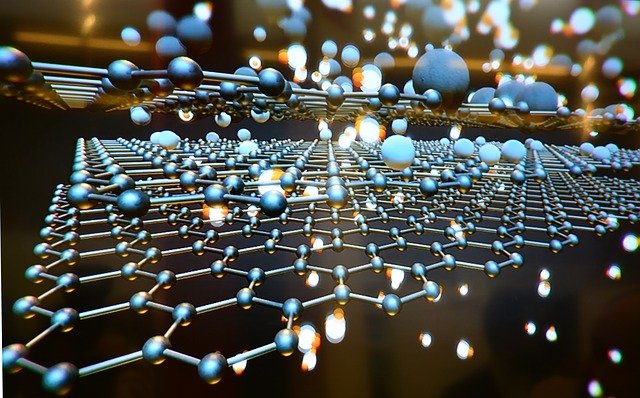Two new graphene-related developments this year — one by Brown University researchers in January and another by MIT researchers in August — showed that this one-atom-thick layer of carbon might offer promise as a means of water filtration. And if it someday proves scalable, it could go a long way toward alleviating the worldwide water shortage, and countering mankind’s unrelenting befouling of the planet’s waters.
The Brown team discovered an inventive way to vertically orient the nanochannels between two layers of graphene, thus making those channels passable for water molecules but little else. These channels normally have a horizontal orientation, but the researchers found that by taking the graphene, stretching it on an elastic substrate and then releasing it, wrinkles could be formed.
Epoxy was then applied to hold this material — labelled VAGME (vertically aligned graphene membranes) by the team — in place. Brown engineering professor Robert Hurt, who co-authored the research, summarized these findings as follows, in a release on the university’s website:
“What we end up with is a membrane with these short and very narrow channels through which only very small molecules can pass. So, for example, water can pass through, but organic contaminants or some metal ions would be too large to go through. So you could filter those out.”
The MIT team, meanwhile, found that graphene oxide foam, when electrically charged, can capture uranium and remove it from drinking water. This is a particularly valuable discovery, given the fact that uranium is continually leaching into reservoirs and aquifers from nuclear waste sites and the like, a development that can lead to various health issues among humans.
MIT professor Ju Li noted in a release on the MIT website that this filtration method can also be used for metals such as lead, mercury and cadmium, and added that in the future passive filters might give way to smart filters “powered by clean electricity that turns on electrolytic action, which could extract multiple toxic metals, tell you when to regenerate the filter, and give you quality assurance about the water you’re drinking.”
Graphene oxide has also been used by a British company, G2O Water Technologies, to enhance water filtration membranes, and led in July of this year to that organization becoming the first of its type to land a commercial contract.
The effectiveness of graphene-oxide membranes was first seen in 2017 at the UK’s University of Manchester, when researchers discovered that they could not only sift out impurities, but also salt — meaning that it could potentially be used to desalinate seawater.
As of 2018, just 300 million people around the world obtained at least some of their drinking water from desalination, and the process is often seen as costly and energy inefficient. Researchers at Purdue University announced in May of this year, however, that they had developed a more energy-efficient method of reverse osmosis, the most widely used type of desalination, a promising advancement indeed.
There is also the issue of pollution, which as mentioned is a considerable one. Studies have shown that 80 percent of the world’s wastewater is dumped back into the environment, and that little of it is treated — that it could be fouled by the aforementioned metals, as well as nutrients from farm runoff, plastics, etc.
There is no simple way to deal with such a deep-seated problem, but certainly graphene offers a potential solution.
